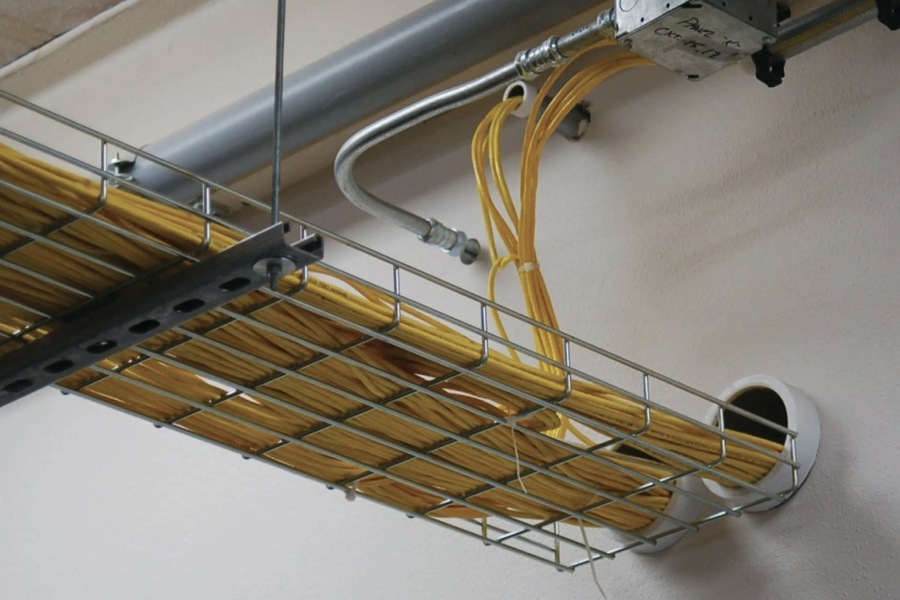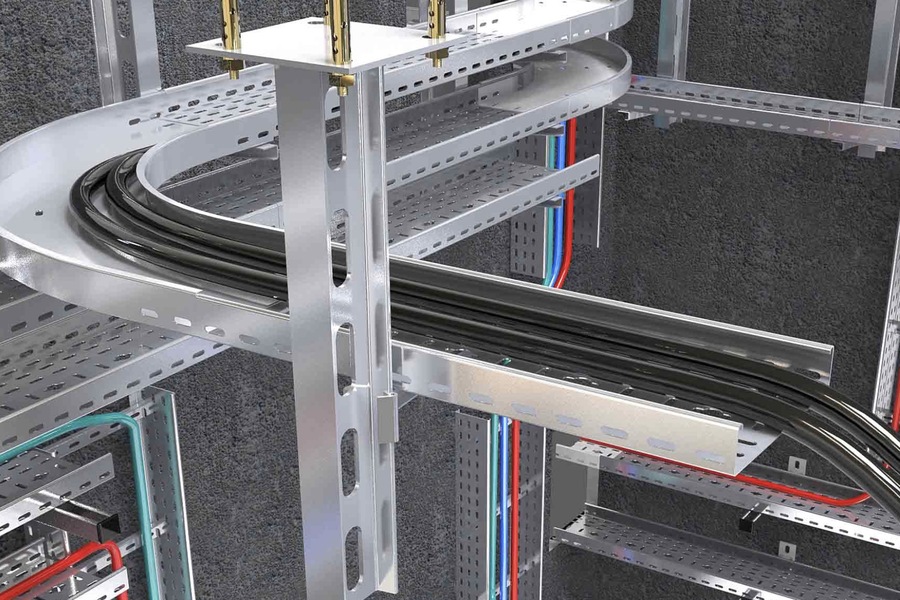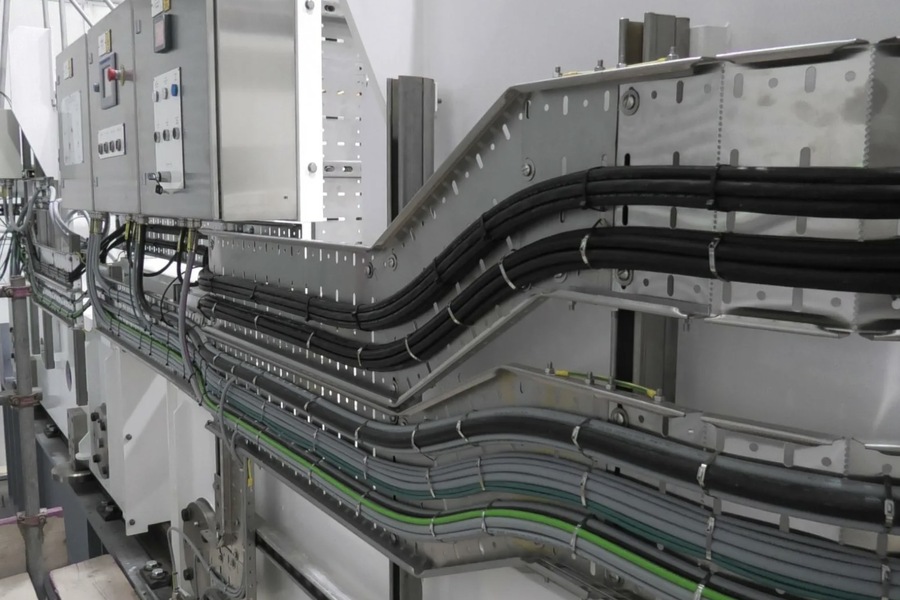The modern construction landscape requires efficient cable management systems to accommodate an ever-growing number of cables—whether they serve power distribution, data transmission, or security functions. To address these needs, cable trays have become a staple in installations for industrial, commercial, and even residential settings. Commonly provided by cable tray manufacturers in UAE and across the globe, these trays offer a practical and scalable solution for cable organization in various environments such as technical rooms, cable tunnels, corridors, workshops, offices, and retail spaces.
This guide explores in detail the different methods available for installing and fastening cable trays, their advantages, and the scenarios each method best serves. Understanding these options is essential for constructing a reliable, organized, and future-proof cable network.
Page Content
Overview of Cable Tray Installation Needs
Cable trays offer a structured approach to cable management, preventing the disorder and hazards associated with loosely routed cables. Cable trays are versatile and can support both high-current power lines and low-voltage communication cables. They simplify maintenance and reduce the risk of electrical interference and cable damage by supporting separation and organized routing of cables. However, the installation of cable trays requires secure and appropriate fastening methods to prevent tray displacement, sagging, or failure under load.
1. Wall-Mounted Cable Tray Installation
Wall-mounted cable trays are a popular choice due to the simplicity of installation and the effective use of vertical space. This method uses brackets, shelves, and consoles to anchor trays directly to the wall, creating a strong, stable support structure that keeps cables organized and accessible.
1.1 Components for Wall Mounting
Brackets and Consoles: These support structures anchor directly to walls, typically using anchor bolts or expansion screws, ensuring stability and load-bearing capacity. Brackets come in various lengths, providing flexibility to support trays at different distances from the wall.
Cable Shelves: Shelves function similarly to brackets, providing a horizontal surface for trays. They are useful in cases where added load distribution is needed.
1.2 Benefits of Wall Mounting
Efficient Use of Space: Wall mounting frees up floor and ceiling space, ideal for facilities with limited overhead clearance.
Multi-Tier Capability: Wall-mounted systems allow for multiple layers of trays, essential for projects that require separate pathways for power, communication, and optical cables.
High Load Capacity: Wall brackets and consoles are engineered to support significant cable loads, ensuring structural stability even with heavy wiring.
1.3 Applications and Considerations
This installation method is suitable for areas with ample wall space, such as service corridors, workshops, and certain office environments. The structural integrity of the wall must be verified to ensure it can handle the load imposed by multiple cable trays, especially when installed in multi-tier configurations.
2. Ceiling-Mounted Cable Tray Installation
Ceiling-mounted cable trays are ideal for facilities where wall or floor space is limited. By attaching trays to the ceiling, installers can create an overhead network that keeps cables off the ground, reducing the risk of damage and obstruction in high-traffic areas.
2.1 Ceiling Brackets and Suspension Systems
Ceiling Brackets: Similar to wall brackets, ceiling brackets are attached to the ceiling via anchor bolts. A prefabricated ceiling bracket assembly is often used to streamline installation.
Drive-in Anchors: In heavy-duty applications, drive-in anchors offer a more secure fastening solution by embedding anchors into the ceiling with specialized tools.
Suspension Profiles: C-shaped or L-shaped profiles can be suspended from the ceiling to support trays. These profiles are modular and adjustable, making them adaptable to various ceiling heights and load requirements.
2.2 Advantages of Ceiling Mounting
Optimal Use of Overhead Space: Ceiling installation keeps cables out of the way, especially useful in areas where wall or floor mounting is impractical.
Enhanced Accessibility: By placing trays overhead, maintenance personnel can access cables without obstructing floor activities, especially in high-traffic zones.
Durability and Flexibility: Ceiling mounts are designed to support substantial cable loads and can be expanded or modified as new cables are added.
2.3 Spacing and Load Management
It is recommended to space ceiling brackets every 1-1.5 meters to prevent sagging. Ceiling mounts should be planned carefully, especially in industrial environments with machinery and ventilation systems, to avoid obstructions and ensure ease of access for maintenance.
3. Using Perforated Steel Tape for Fastening
Perforated steel tape is a cost-effective option for fastening cable trays, particularly in applications where load requirements are minimal. Steel tape is versatile and can be attached to various surfaces, though it lacks the rigidity of brackets and consoles, limiting its application.
3.1 Features of Perforated Steel Tape
Flexibility: Perforated steel tape can be shaped and cut to fit specific tray configurations. It is commonly attached to the ceiling or wall using bolts screwed into anchors.
Ease of Installation: This lightweight fastening method requires fewer tools and is quick to install, making it a good choice for small-scale projects.
3.2 Limitations of Perforated Steel Tape
Limited Load Capacity: Steel tape is unsuitable for installations with high cable volume or heavy loads, as it lacks the rigidity and strength of other fastening methods.
Restricted Use: Due to its flexibility, steel tape is typically used only for short spans or installations with small cable trays.
3.3 Best Use Cases
Steel tape is ideal for budget-conscious projects where cable loads are light and where structural expansion is unlikely. For larger or more complex installations, alternative fastening methods like brackets or profiles are recommended.
4. Floor-Mounted Cable Tray Installation
Floor mounting is sometimes necessary when overhead or wall space is unavailable. Floor-mounted trays can be placed along walls or in pathways, offering secure cable management in these scenarios.
4.1 Components for Floor Mounting
Floor Stands and Bases: Free-standing floor racks and stands offer support for trays, keeping them elevated off the ground. These stands come in various heights and load capacities, allowing for flexible cable routing.
Universal Brackets: Adaptable to floor, wall, or ceiling installations, universal brackets provide a secure foundation for floor-mounted trays, especially in cases where trays must be arranged along corridors or equipment rooms.
4.2 Advantages of Floor Mounting
Space Utilization: Floor mounting is suitable for industrial facilities, data centers, or workshops where wall or ceiling mounting is impractical.
High Load Capacity: Many floor-mounted options are designed to carry heavy cable loads, making them ideal for environments with extensive wiring.
Flexible Placement: Floor-mounted trays can be placed exactly where needed, without restrictions imposed by wall or ceiling surfaces.
4.3 Planning Considerations
In high-traffic areas, floor-mounted trays should be positioned to avoid interference with personnel or equipment. Additionally, floor mounts may require protective barriers to prevent accidental damage.
5. Choosing the Right Method for Cable Tray Fastening
Selecting the appropriate fastening method for cable trays is crucial to building an efficient, durable cable management system. Here are some factors to consider:
Cable Load and Tray Size: Heavier cable loads require more robust fastening solutions such as ceiling brackets or wall consoles.
Environmental Conditions: For industrial environments or outdoor settings, consider corrosion-resistant materials and fastening methods that can withstand weather, temperature fluctuations, and humidity.
Future Expansion Needs: Cable trays often require expansion as new equipment or services are added. Opting for versatile fastening solutions, such as adjustable brackets or modular racks, simplifies future expansion.
Compliance with Standards: Industry standards often dictate the separation of certain cable types, like power and communication cables, to prevent interference. Adhering to these standards when choosing a fastening method will enhance the safety and performance of the network.
Conclusion
An effective cable tray installation is foundational to any infrastructure project, as it provides safe, organized routing for critical cabling. By carefully selecting the appropriate method for fastening cable trays—whether wall-mounted, ceiling-mounted, floor-mounted, or using steel tape—engineers can create systems that are not only functional and efficient but also scalable and compliant with industry standards. With options ranging from simple steel tape for light loads to robust ceiling mounts for dense cable networks, cable tray manufacturers and installers in the UAE and beyond offer solutions that meet the diverse needs of today’s projects.
Through careful planning and attention to installation methods, you can achieve a durable cable management system that supports the long-term goals of the facility, making maintenance and future expansion manageable and cost-effective.




